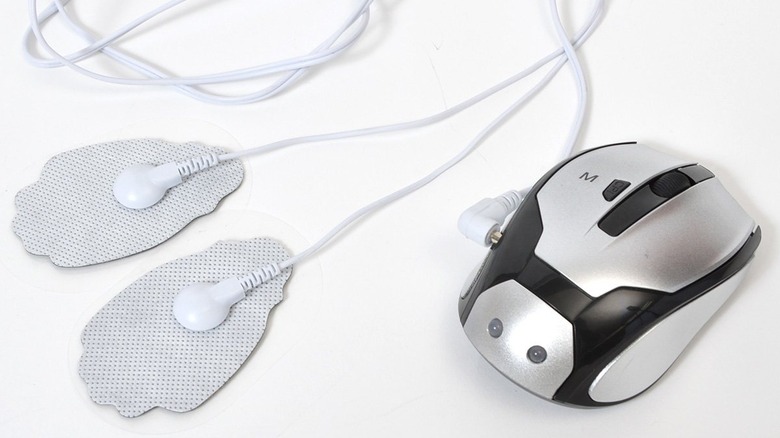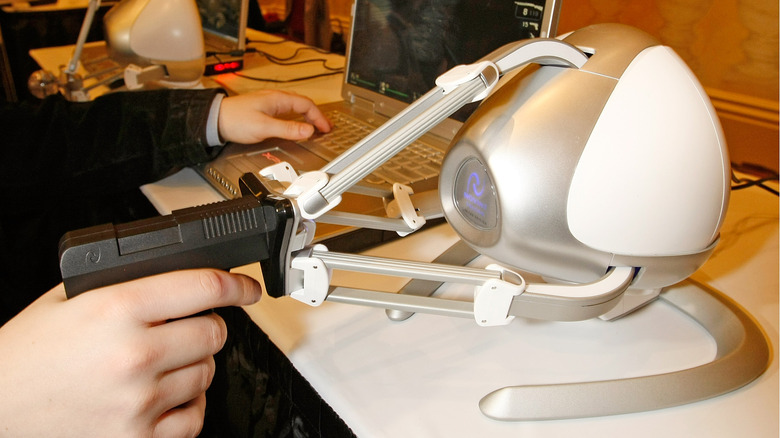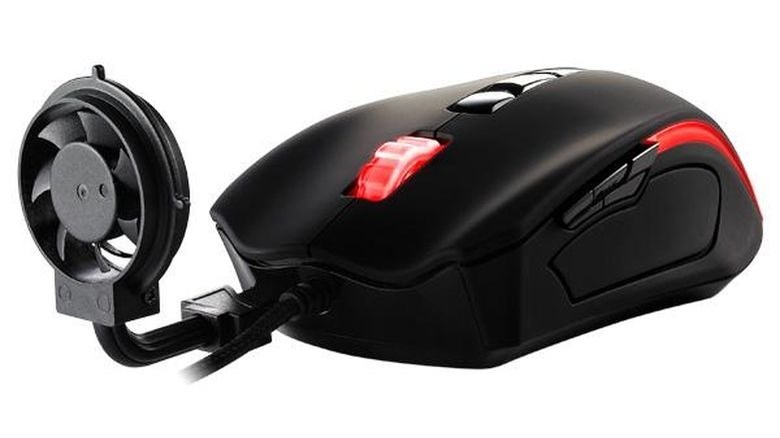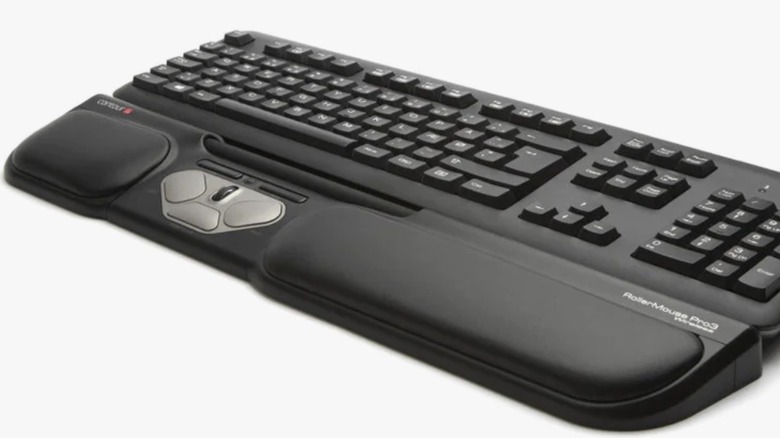5 Bizarre Computer Mice We Can't Believe Exist
We may receive a commission on purchases made from links.
The keyboard and the mouse are the tried and true definitive input devices you use with a computer. But for decades, the tech world has done its best to reinvent the wheel (or the scroll wheel, as the case may be). For the most part, they failed miserably. Instead of creating innovative, (r)evolutionary products, they built clunkers with lots of charisma but little functionality, and most ended up in the landfill. The same can be said for some really odd game controllers.
Some companies doinked around with "improved" ergonomics so much it hurt your wrists just looking at them. Others had bits and baubles that could be screwed on or off like some deranged engineering puzzle or stretched the technical bounds of what a mouse was supposed to be.
So let's dive into that landfill and sift through the rubble to look at five truly bizarre computer mice (if you want to call them that) that have come down the pipe. And believe it or not, despite the age of some of these mice, you can still find a few for sale. A word of warning, though: unless you're a collector adding them your own personal Mouse Museum, you probably want to leave your money safely in your wallet.
Kinniku Muscle Mouse
"Novelty" mice are as numerous as stars in the sky. From ones that look like cars, are named after food, turn into dinosaurs, or could be used to make a phone call, these carnival clickers can be found in every shape and color, with every bell and whistle. The Kinniku Muscle Mouse leans hard into that novelty realm.
We won't blame you if the name evokes images of a Saturday morning cartoon character. While some mice came with tiny little weights to make them heavier or lighter based on personal preference, this one took the road less traveled by including four electrostimulation pads that could be strategically placed anywhere on the body to — you guessed it, provide electrical muscle stimulation.
The goal was to tone muscles without working out. You could sit at your computer and let technology build a leaner, meaner body. Plug the electrode directly into the side of the mouse, attach the pads to your biceps, stomach, or legs, and voilà — watch those muscles twitch. The three available levels of intensity were controlled by buttons on the mouse.
It was Windows and Mac compatible, weighed about 5.3 ounces, had an 800 dpi sensor, and retailed for approximately $50. The idea is sound because electrical stimulation does, in fact, tone muscle and is used routinely for physical therapy. But this was just weird.
Novint Falcon
At least Kinniku's muscly creature looked like a mouse, whereas the Novint Falcon looked more like GLaDOS from the "Portal" games.
The Falcon is technically a haptic feedback device to make you feel the game instead of just playing it. Still, if we're being honest, you only felt a lot of pain because your arm's position while using it wasn't precisely kinesthetically appropriate for long durations.
It was controlled by what can best be described as a small golf ball-sized orb attached to a bigger pyramidal-shaped housing. Each of the three connecting arms attached to the orb was wired to a motor that updated its position 1,000 times a second. It produced precise controls and gave the user the feeling of textures, shapes, weights, dimensions, and dynamics.
When the Falcon hit store shelves in June 2007, it retailed for a hefty $239. When the pistol grip attachment came out the following year (for an extra $20), it immediately became the must-have accouterment because, at the time, it was as close to firing a real gun as you could virtually get.
Except, game developers never got behind it, so the Falcon never received much in the way of software support. Additionally, it was bulky and relatively heavy for a desktop peripheral. Lastly, the must-have pistol grip may or may not have been banned in some states.
Thermaltake Black Element Cyclone
Thermaltake, best known for its computer cooling products, took that "don't let them see you sweat" refrain from antiperspirant commercials and applied it to your hand. Well, the hand you gripped your mouse with, at least.
In 2012, the Black Element Cyclone (released through its TT eSports brand) was the world's first gaming mouse with a detachable cooling fan. The 6,000 rpm fan attached to the Cyclone was supposed to help whichever hand you used to grip that little bugger stay dry during a hot and sweaty gaming session.
Not only did it have a little fan that blew air directly onto your hand, but it was covered in a "military-grade" rubber coating so it could be gripped better. The Cyclone featured 6500 DPI, five different lighting choices, and nine buttons, which allowed for 45 customizable macros key. The base also had five removable 4.5-gram weights to customize the overall mass.
With a retail price of $80, you got a decent mouse with some good features, but the fan was definitely a gimmick.
The WarMouse Meta
The WarMouse Meta started life in 2009 as the OpenOfficeMouse, but because WarMouse couldn't get the rights to call it "Open Office," it changed it to "OOMouse" and then Meta (no, not that Meta) when it was released the following year.
That's one seriously long and winding road for a mouse with not two or three buttons but eighteen. It can be hard enough pushing the "fire" or "alt fire" button in a heated exchange, so forget about remembering which one of the other sixteen you programmed for strafe or jump. It also had an analog joystick nestled on the side for the thumb to move around.
The Meta had 512K of memory, could hold 52 programmable commands, and execute 3,072 of those simultaneously (somehow). It was aimed primarily for use with programs like Excel and Photoshop. Still, the Meta encapsulated an entire category of peripherals where the mantra was "more buttons are better," much like the Razer Naga, an MMO-oriented mouse that tried to squarely put all of the buttons from your keyboard directly onto your mouse instead.
In 2010, Endgadget called it the most advanced mouse" they'd ever seen. In the end, though, even at $79.99, this open-source, multi-button joystick keypad mouse contraption was trying to be too many things.
Contour RollerMouse 3
Like Novint's Falcon, Countour's RollerMouse 3 ditches the mouse entirely and goes with something quite different.
An ambidextrous rolling bar on a stick sits at the base of your keyboard and is meant to keep your hands firmly on the keyboard at all times. Instead of using a conventional mouse, which according to Contour, can cause poor posture. That, in turn, can create pain in the hand and wrist. So, you instead use your finger and thumb to roll and slide the cylindrical bar left and right.
While it sounds a little like a touchpad on a laptop, it's a bit more complex than that. Contour claims its centralized pointing device and placement avoided reaching for the mouse eliminating "unnecessary muscle activity in your arms, shoulders, and neck."
We don't know about all that, but the latest version (RollerMouse Pro3, with six programable buttons and ten cursor speed settings) can be purchased from Contour's website for $249.




